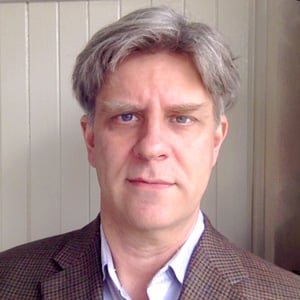A focus group tasked with working out the details of what a self-determining Indigenous church will look like is considering a model in which Indigenous Anglicans will belong to both their local dioceses and the Indigenous church at the same time.
“We’re really talking about congregations having a sense of dual belonging in the Indigenous church and in their own dioceses,” National Indigenous Anglican Bishop Mark MacDonald said in an interview with the Anglican Journal. MacDonald, along with three other bishops, gave a presentation on recent work of the task force at the spring meeting of the Anglican Church of Canada’s House of Bishops in Niagara Falls, Ont., April 24-28.
While many Indigenous Anglicans have been calling for a “self-determining” Indigenous church for decades, some significant steps have been made, in the past few years in particular. In 2015, the eighth National Anglican Sacred Circle, a national gathering of Indigenous Anglicans, said it favoured the idea of a fifth Anglican province, this one fully Indigenous, to add to the four ecclesiastical provinces that currently make up the Anglican Church of Canada.
Archbishop Fred Hiltz, primate of the Anglican Church of Canada, said the presentation gave him a sense that among Canadian Indigenous Anglicans, “there is much less focus now on the idea of a fifth province,” with instead the idea of a grouping that would be something like an “overlay” on the current four-province structure.
Hiltz mused whether this model, a work in progress though it is, might be the sign of a coming “new covenant” between the Anglican Church of Canada and its Indigenous members, one with the goal not only of creating an Indigenous church but also of involving and transforming the entire national church.
The idea of what shape an Indigenous church might have was also discussed at General Synod last summer. Since then, MacDonald said, its possible shape has become a little clearer. Indigenous Anglican leaders are using the word “confederacy” to describe the future Indigenous church, both because it is familiar to many Canadian Indigenous people and because it carries the idea of “voluntary involvement retaining a sense of the local identity,” MacDonald said.
The focus group, MacDonald said, hopes to start its “dual belonging” model with a small number of Indigenous congregations initially, as a sort of pilot project.
The model is still only a draft, MacDonald said, and has yet to be discussed by the Anglican Council of Indigenous Peoples (ACIP) at its meeting in June and at a national consultation on Indigenous self-determination planned for this September. It must ultimately be approved by Sacred Circle, which meets next in 2018.
Another highlight of the House of Bishops meeting, Hiltz said, was a series of presentations by David Pfrimmer, a professor of public ethics at Waterloo Lutheran Seminary. (For the first evening and full day of the meeting, the House of Bishops met jointly with the Conference of Bishops of the Evangelical Lutheran Church in Canada.) The presentations dealt with topics such as the Brexit referendum in the U.K., the election of Donald Trump in the U.S. and the evolving role of religion in Canadian society. Pfrimmer, Hiltz said, talked about how Canadian Christians should draw upon their past experience of “public ecumenism”—joining forces with one another on ethical and political issues—to engage now with the many Canadians of other religions.
Pfrimmer underscored that “the Canada that we celebrated at 150 years old is a very different Canada than we were celebrating at 100 years old,” said Hiltz. “We’re actually a much more multi-cultural, multi-racial, multi-faith kind of country.”
John Chapman, bishop of the diocese of Ottawa, said he agreed with Pfrimmer. “We have voluntarily silenced our voice in the public square, it seems to me, in the last 30-40 years,” he said. “All religious voices should be heard in the formation of public policy, and we need to reclaim that place that we once had.”
These presentations, Hiltz said, were “an opportunity to lift up our heads and look out to the world and to talk about the public, as David [Pfrimmer] put it, that we are called to serve.”
Hiltz said he also saw, at the House of Bishops meeting, “signs of new life” in the form of new engagement in many dioceses with a wider range of issues: refugees, the environment, poverty and Indigenous/non-Indigenous relations.
The bishops also discussed, he said, the need to do a kind of national “check-up” on how dioceses have been responding to a provisional vote by General Synod last summer to allow same-sex marriages. This check-up, he said, would likely take place at the House of Bishops meeting in spring 2018.
Several bishops praised this spring’s House of Bishops meeting as an especially rewarding opportunity for relationship-building and learning.
“I felt like the quality of the exchanges we had at this House of Bishops was quite remarkable,” said Melissa Skelton, bishop of New Westminster.
Diocese of Huron Bishop Linda Nicholls said she found Pfrimmer’s presentation “certainly challenging.”
Four new bishops attended the meeting for the first time: Diocese of Algoma Bishop Anne Germond and Toronto Suffragan Bishops Kevin Robertson (York-Scarborough), Riscylla Walsh Shaw (Trent-Durham) and Jenny Andison (York-Credit Valley).
Many also said they were moved by a dinner and service in memory of Terence Finlay, former bishop of Toronto, metropolitan of the ecclesiastical province of Ontario and chaplain at House of Bishops meetings, who died in March at age 79.
“A number of us…throughout the liturgy were in tears, tears of sadness that we’ve lost such a good friend, but tears of joy for the wonderful friendship that we shared with him for so many years,” Hiltz said.
– With files from André Forget






